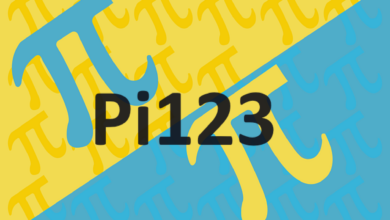
Scalability, decentralization and security are the fundamental parts of the blockchain trilemma. This concept also refers to the challenges of finding a good balance between these three vital features that could improve blockchain technology. Blockchain needs to be scalable, meaning it must process high transaction volumes to have a better chance of supporting widespread adoption. On the other hand, blockchain must also be decentralized and secure to provide censorship resistance and tamper-proof trust. However, improving a single trait can come at the cost of sacrificing others.
For instance, enhancing transaction speeds by centralizing validation can weaken decentralization. So, can it be possible to boost scalability while also retaining decentralization and security? Well, this is what the blockchain trilemma is trying to figure out.
Blockchain is an important technology that can be used in many industries, although it is more generally known as the platform that supports the creation of cryptocurrencies. Cryptocurrencies are digital assets that brought another alternative to fiat money by adding decentralization into the game. According to Binance, Bitcoin is the largest digital asset at the moment by market cap, followed by Ethereum.
In this blog post, we will further discuss the blockchain trilemma and how to find the perfect balance for future growth.
Let us get to it.
What is the blockchain trilemma?
The blockchain trilemma has emerged from the difficulty of managing three crucial properties of this technology at the same time. These three parts are:
- Scalability. It is the ability to encourage and support increased transaction volumes. This feature includes parameters like block sizes, bandwidth and transactions per second (TPS).
- Security. It is the resistance to attacks like fraud manipulation and hacking through features like consensus rules and encryption.
- Decentralization. It is the participation in the validation through nodes across multiple entities and locations rather than relying on a centralized authority, like a bank or the government.
Scalability challenges
One of the challenges that the blockchain is struggling now is scalability. Bitcoin supports seven transactions per second (TPS), while Ethereum around 15. This limited capacity can lead to network congestion and higher fees, which has already happened in the past with Ethereum and Bitcoin. Without adopting meaningful scalability solutions, blockchain technology might struggle to grow as it should.
Potential solutions
- Sharding. With the help of sharding, the transactions will break into smaller parts called “shards”, which are processed by the network in parallel, thus allowing more transactions simultaneously. Sharding can maximize capacity, as the nodes will reach consensus at a shard level instead of on the entire blockchain.
- Layer 2 Protocols, which can move activity off the main chain, thus easing congestion in a great measure.
Maintaining security
Robust security is one of the foundational pillars of the blockchain and a reason that made this technology so appealing. Blockchains are designed to offer tamper-proof trustlessness when a transaction is made without involving any intermediary. This requires an excellent model that eliminates the possibility of fraudulent manipulation and hacking.
Consensus protocols are one of the measures that provide durable security. Bitcoin uses a proof-of-work (PoW) model that requires miners to solve mathematical challenges to create new blocks and validate transactions. If someone wanted to attack the network, it would need to amass over 50% of the processing power, which is economically impossible.
Meanwhile, a Proof-of-Stake (PoS) implies validators to stake crypto in order to verify transactions and they can get slashed if acting dishonestly. Securing blockchain networks via penalties and cryptography can enable trustless peer-to-peer transactions everywhere around the globe.
However, as the world becomes more digitized, blockchain must continue boosting security to reduce cyberattack risks. This can be made with features like resilient consensus rules, good wallets and encryption.
Preserving decentralization
Decentralization is another mantra of the blockchain philosophy, as it removes central points of failure. This characteristic is one of the most essential features of a distributed ledger, as it eliminates the need for intermediaries. However, the trilemma could add technical features that could gradually move the authority into the hands of some developers and validators.
The blockchain industry must remain vigilant against those choices that can undermine distributed authority and open participation. The essence of decentralization can weaken if a network moves towards centralized governance by a small group of people or individuals.
Possible solutions to the blockchain trilemma
The blockchain space is exploring innovative approaches to achieve a fully decentralized platform with improved security that could handle massive transaction volumes. Here are some options that would accomplish this:
- Directed Acyclic Graphs (DAGs) are decentralized ledgers that can spread validation across the participants via asynchronous communication and gossip protocol. DAG data structures can replace blocks, as they might attain speed competitiveness without the issues related to mining activities of decentralization.
- Quadratic Sharding promises quasi-linear scalability gains where blockchain can partition nodes into randomized shards, while processing transactions simultaneously. This alternative could address the shared security vulnerabilities.
- Hybrid models. A hybrid blockchain gathers the best advantages of both permissioned and public permissionless blockchains, thus offering a private and secure network with selecting transparency.
The bottom line
As the blockchain platforms are looking for improved solutions to address some issues, those who will be able to solve the trilemma while keeping decentralization intact and users safe will surely gain a competitive edge. However, if networks choose to remove some of the features of decentralization, they will lose the fantastic attributes that make them unique from traditional finance. The trilemma has massive implications for how blockchain technology will continue to grow. It also acts as an unofficial way to bring technical evolution to the crypto-verse.
Platforms should look for new options to balance the three vertices of security, scalability and decentralization. If they succeed, they could make this technology more groundbreaking which could lead to mainstream adoption.




